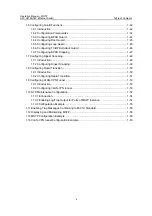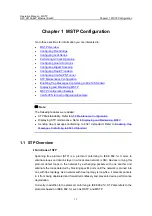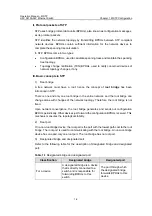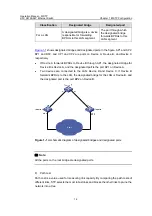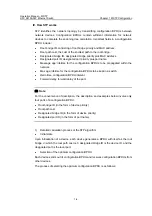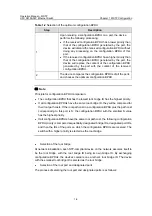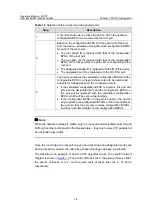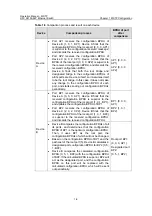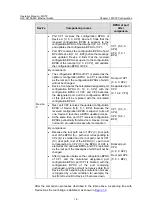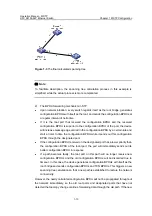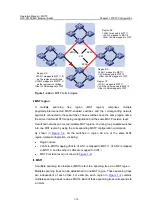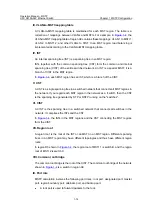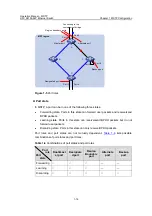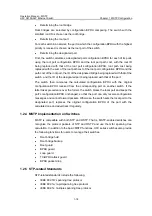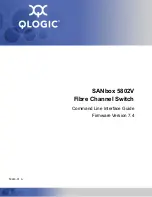
Operation Manual – MSTP
H3C S3100-52P Ethernet Switch
Chapter 1 MSTP Configuration
1-4
IV. How STP works
STP identifies the network topology by transmitting configuration BPDUs between
network devices. Configuration BPDUs contain sufficient information for network
devices to complete the spanning tree calculation. Important fields in a configuration
BPDU include:
z
Root bridge ID, consisting of root bridge priority and MAC address.
z
Root path cost, the cost of the shortest path to the root bridge.
z
Designated bridge ID, designated bridge priority plus MAC address.
z
Designated port ID, designated port priority plus port name.
z
Message age: lifetime for the configuration BPDUs to be propagated within the
network.
z
Max age, lifetime for the configuration BPDUs to be kept in a switch.
z
Hello time, configuration BPDU interval.
z
Forward delay, forward delay of the port.
Note:
For the convenience of description, the description and examples below involve only
four parts of a configuration BPDU:
z
Root bridge ID (in the form of device priority)
z
Root path cost
z
Designated bridge ID (in the form of device priority)
z
Designated port ID (in the form of port name)
1) Detailed calculation process of the STP algorithm
z
Initial state
Upon initialization of a device, each device generates a BPDU with itself as the root
bridge, in which the root path cost is 0, designated bridge ID is the device ID, and the
designated port is the local port.
z
Selection of the optimum configuration BPDU
Each device sends out its configuration BPDU and receives configuration BPDUs from
other devices.
The process of selecting the optimum configuration BPDU is as follows:


